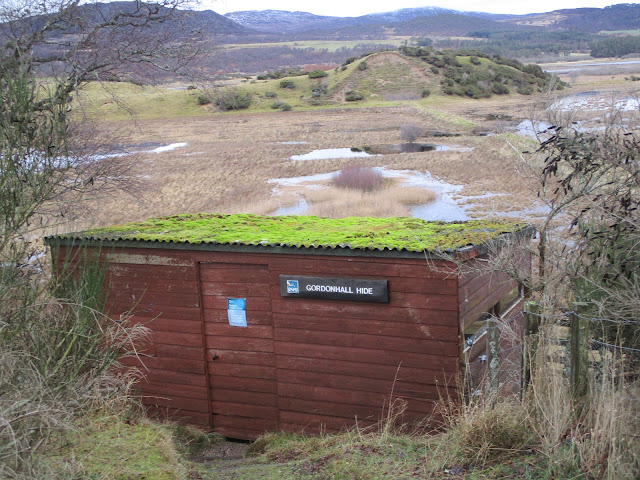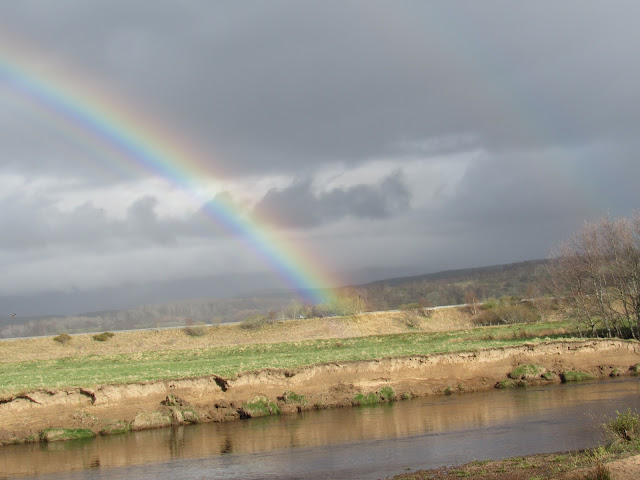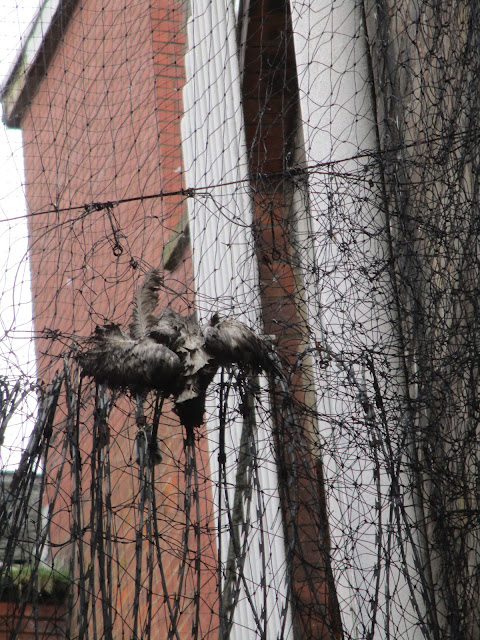 |
| Robert Shufeldt - extinctions inevitable |
Back in 1912, no one spoke of a biodiversity crisis, nor of global warming. The agro-chemical industry was in its infancy, and the human population was significantly lower than it is today. But, for different reasons, Mother Nature was on the run. Below is an extract from The Extermination of America's Bird Fauna, by Robert Shufeldft (1850-1934), a leading ornithologist of the day.
NO one noted any decrease in the birds of the United States and her territorial possessions during colonial times, when wild turkeys were shot all over New England.
They were found in millions, too, all over the rest of the country.
One writer went so far as to state that, in Florida, these birds caused the Earth to tremble when they all gobbled together in the forest at the dawn of day!
Audubon describes the netting of quails in the western and southern States during his time (1832) when three or four men on horseback would capture and kill these birds to the extent of "many hundreds in the course of a day".
This practice - to say nothing of what traps and the gunners were doing - was going on everywhere.
Think of three men in New Jersey netting 600 quails in one day, killing them as captured, and sending the lot to market where they fetched a quarter of a dollar a pair! Three men only!
No issuance of a note of warning of future extermination was then thought of, though these 'sportsmen' were often considerate enough to allow one pair its freedom out of every bunch captured in that "the breed might be continued".
Again, in Audubon’s earlier days (1813) he saw flocks, miles long, of the passenger pigeon, numbering hundreds of millions.
Millions upon millions of these birds were slaughtered in this country every year; millions of them were allowed to rot upon the ground after having been shot or knocked down.
Yet Audubon wrote: "Persons unacquainted with these birds might naturally conclude that such dreadful havoc would soon put an end to the species".
"But I have satisfied myself, by long observation, that nothing but the gradual diminution of our forests can accomplish their decrease, as they not infrequently quadruple their numbers yearly, and always at least double it.”
In this prediction the 'great bird-man' was again mistaken for those untold billions of passenger pigeons are now all extinct.
We have still enormous stretches of primeval forests left, but not a single pigeon in them.
Already, 1,000 dollars has been offered for a single nest with eggs, and a good skin will soon be worth as much.
In 1872, in Connecticut, I saw flocks of these pigeons that obscured the sun as they passed.
During the day I shot 36 of them and stopped.
Others shot hundreds, and the firing on the hills north of Stamford was continuous for three days.
Barrels upon barrels of the birds were slaughtered.
In 1864, I was in southern Florida and on the Bahama Banks for over a year.
In those times, the various kinds of waders, pelicans and seafowl of many species were to been seen in millions.
I have seen gulls, terns, cormorants, men-o’-warbirds and the like, arise from their eggs on the breeding grounds in such numbers as to darken the sun for hours like a total eclipse until they settled down again.
Some of my friends have been in the Bahamas and Florida recently (1912), and they were they astounded at the vast number of roseate spoonbills and flamingoes they saw.
During the latter part of the 1870s, I travelled nearly all day along the South Platte River in an express train.
Canada geese literally covered the river and the rolling country on both sides of it as far as one could see, for hours at a time, as we passed on.
As darkness approached, their numbers were undiminished.
It was an easy matter to shoot a hundred or more in a forenoon.
Has this country anywhere anything of the kind to show now?
In 1867, there used to be a swamp at Stamford, Connecticut, near the steamboat-landing; it covered some ten acres.
One evening I saw the barn swallows go to roost there.
They actually crushed the rushes down in many places, and still the air was filled with thousand of the birds as darkness came on.
How many barn swallows does one see around Stamford in a season in these days? A hundred pairs? I think not!
In Mexico, in 1859, I saw on the Coatzacoalcos River a flock of many thousands of scarlet ibis.
It was a never-to-be forgotten sight as they all came down together and covered several acres of a mud flat on the shores of the river.
Again, I have seen Long Island Sound in the winter time, 40 miles from New York City, actually covered with a dozen species of sea ducks - flocks of thousands, of each kind.
One could hear the birds for miles.
Sometimes as many as four or five swivel-gun sloops were at work among them, killing from 50 to 200 at a shot, and keeping this up all day and every day, for the markets or often only for 'sport'.
In the winter of 1865, I once saw the various species of gulls and terns so numerous in New York harbour, that more than 50 boats of the 'feather-collectors' were out shooting them.
One man passed near the quarter of the gunboat I was on board of, as I stood on deck, and I calculated he had at least two or three hundred gulls in his boat.
He was using a single-barrelled muzzle-loading gun, and was pulling ashore for more ammunition.
In the winter, it is truly pitiful to see the little flocks of gulls off The Battery nowadays.
Sometimes, there really may be as many as ten in a flock and four in another - the two being a little over half a mile apart!
This is the history of gulls and terns in New York harbour for less than half a century.
Mark you, in another half century, a gull flying over those waters will be an extraordinary sight indeed, and worthy of note in various ornithological publications!
In my opinion, the passenger pigeon and Labrador duck in this country are utterly extinct - quite as much so as the great auk.
Not a few more of our species are now going in precisely the same way, such as the Carolina parroquet, the ivory-billed woodpecker, the sharp-tailed grouse and 44 other fine species of birds.
When the Japanese ship hundreds of bales of birds' skins for fashion purposes from the islands of the Pacific in one season, gulls, terns and albatrosses will not last very long.
Not long ago, one invoice of hummingbird skins from South America totalled 400,000 skins!
In Italy, the bird fauna has practically been exterminated, and this is rapidly coming to pass in hundreds of other localities - in the Far East, in South America, in Europe, Asia, and even in Africa and Australia.
In other words, all over the world birds are now being exterminated with enormous and ever increasing rapidity.
Within the next few years, hundreds of species will become entirely extinct.
When a species - be it a bird or any other animal - once becomes extinct, it is never reproduced again.
In my opinion, the entire class known as Birds is now doomed to utter extinction.
In a century or so, the world will effectively be birdless.
When that time has expired, the class will be represented by only a few kinds which have survived through man’s having domesticated them.
That this would be their fate I predicted nearly a quarter of a century ago, and I see no reason for changing my opinion.
All the protection they receive will not save them from their increasing natural enemies - from:
* Man and his numerous weapons and devices for their destruction
*The plume collectors and Italian destroyers
* Poison, cats and traps
* Boys all over the world with their airguns and destructive propensities
* The elements, as many thousands are drowned every year by being blown into the water
* The fact that they have no safe places of refuge
* Striking against wires, lighthouses and other structures
* The fact that they are oviparous, and, all over the world, their eggs are destroyed every year by the million, thus defeating their reproduction.
Moreover, the human population of the world is now increasing with astounding rapidity.
When certain species of birds become nearly extinct, nothing protects them now, nor will anything protect in the future such species from destruction at the hands of the museum and ornithological collectors.
No law will be of any avail, and, when such is the case, it will come too late.
A Labrador duck in nature today, wearing, as it does, a skin worth more than 1000 dollars, would stand no more chance for its life, were it found by any one with the means of capturing it, than would a man falling out of an airship when a thousand feet above the Earth.
It would be collected - that’s all!
This is what is going on right now.
The plume and feather collectors all over the world reduce a species to the very door of extermination after which that species "does not pay to hunt", then the collector, finding that the bird is about to disappear forever, steps in and rakes in the rest for museums or private collections - each collector justifying himself by saying: "If I do not collect it, some one else will".
How long does any one suppose our wood ducks will last, when certain of its feathers are now being advertised for 25 cents apiece?
It required a great many thousand years for birds to become completely differentiated from their reptilian stock.
When they did, they passed on to great perfection - in most instances to extreme beauty, to marvellously refined structure and song, and - unfortunately for them in only too many instances - to great delicacy of flesh.
All of these factors will result in their destruction.
There are fewer than 15, 000 different species in the world’s avifauna, and, from what I have pointed out above, I am of the firm conviction that there is no saving them.
To me, it is a horrible thing to think of - a world without birds!

.JPG)


.jpg)

.JPG)
.JPG)
.JPG)













.JPG)





.JPG)







.JPG)

